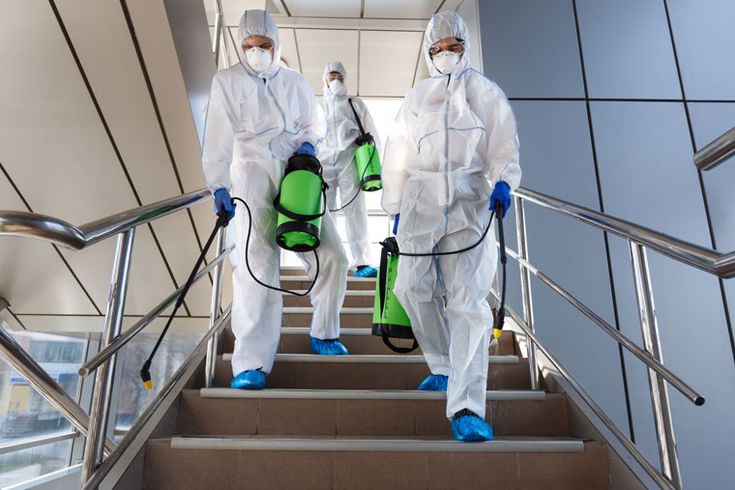
Pests have long been a significant challenge in agriculture, threatening food security and economic stability across the globe. Traditional pest control methods often involve reactive measures—treating infestations after they occur. However, with the rise of Artificial Intelligence (AI), the agricultural sector is witnessing a transformative shift toward proactive, data-driven approaches. Integrating AI in pest prediction and control not only enhances efficiency but also offers a range of benefits for sustainability, productivity, and cost-effectiveness.
In this article, we explore the key benefits of incorporating AI into pest management systems and how this technology is revolutionizing agriculture in the 21st century.
1. Early Detection and Prevention
One of the most significant benefits of using AI in pest control is the ability to detect potential outbreaks before they cause substantial damage. AI-powered models can analyze weather patterns, crop data, soil conditions, and historical pest data to forecast where and when pest infestations are likely to occur.
How it works:
- AI algorithms process large volumes of real-time data from IoT sensors, drones, and satellites.
- Machine learning models identify patterns associated with previous infestations.
- Predictive alerts inform farmers or agricultural workers of potential risks.
The impact:
Early warning systems mean that interventions can happen before a pest population becomes unmanageable. This reduces crop losses, preserves plant health, and decreases the need for widespread pesticide application.
2. Precision Pest Control
AI enables precision in pest management by recommending targeted treatments. Rather than treating entire fields with chemicals, AI tools help identify specific zones where pests are present.
Benefits of precision control:
- Reduced chemical usage: Applying pesticides only where needed limits environmental impact.
- Cost savings: Farmers spend less on chemicals and application labor.
- Improved crop health: Fewer chemicals mean healthier soil and plants.
- Enhanced biodiversity: Beneficial insects and soil microorganisms are less affected.
For instance, AI-enabled drones can scan fields and use computer vision to spot pest infestations. These drones can then either release beneficial insects or apply localized treatments with high accuracy.
3. Real-Time Monitoring with IoT and AI
The integration of AI with Internet of Things (IoT) devices has unlocked powerful capabilities for real-time monitoring. Sensors installed in fields collect data on temperature, humidity, soil moisture, and crop health, which AI algorithms analyze continuously.
Real-time advantages:
- Immediate identification of pest threats.
- Constant updates on environmental conditions influencing pest behavior.
- Alerts sent to smartphones or dashboards allow for instant decision-making.
Farmers no longer have to rely solely on manual scouting, which can be time-consuming and less effective. Instead, AI-driven monitoring ensures a round-the-clock surveillance system.
4. Data-Driven Decision Making
AI empowers agricultural professionals with actionable insights derived from comprehensive datasets. Through data visualization and predictive analytics, AI platforms assist in making smarter decisions related to pest management.
Example applications:
- Choosing the best pesticide based on pest type and lifecycle.
- Deciding the optimal time for treatment to maximize effectiveness.
- Evaluating the potential risk of pest resistance to certain chemicals.
By shifting from guesswork to science-backed decision-making, AI significantly improves the outcomes of pest control strategies.
5. Reduced Environmental Impact
Excessive use of pesticides has long been a concern due to its harmful effects on the environment, including water contamination, soil degradation, and harm to non-target species. AI plays a crucial role in making pest management more eco-friendly.
How AI helps:
- Reduces over-application through precise targeting.
- Recommends biological or integrated pest management solutions where possible.
- Identifies resistant pest populations to avoid ineffective treatments.
By minimizing chemical usage and advocating for sustainable practices, AI contributes to healthier ecosystems and long-term environmental preservation.

6. Improved Yield and Food Security
Pests account for an estimated 20-40% of global crop losses annually, according to the Food and Agriculture Organization (FAO). AI-driven pest control directly addresses this issue by protecting crops more effectively.
Yield-related benefits:
- Lower crop damage due to early interventions.
- Better quality produce with reduced blemishes or disease.
- Predictable harvests improve planning and distribution.
Ultimately, this contributes to improved food security, especially in regions where agriculture is a primary livelihood and staple food supply.
7. Cost Efficiency and Resource Optimization
Traditional pest management methods can be expensive and inefficient. AI helps optimize resources by minimizing waste and maximizing results.
Economic advantages:
- Reduced labor costs with automation and predictive alerts.
- Lower expenditure on pesticides and fertilizers.
- Fewer crop losses translate to better return on investment.
Moreover, smallholder farmers, who often operate on tight margins, benefit from AI solutions that reduce the burden of costly trial-and-error methods.
8. Adaptive Learning and Continuous Improvement
Unlike static systems, AI models continuously learn and adapt. With each new season, they ingest updated data and refine their predictions and recommendations.
Ongoing improvement:
- The more data collected, the more accurate the system becomes.
- AI can adapt to new pest species or emerging resistance patterns.
- Farmers can customize AI systems based on their location, crop type, and farming practices.
This adaptability ensures that pest control strategies remain relevant in an ever-changing agricultural environment.
9. Integration with Broader Agricultural Systems
AI in pest control is not a standalone solution—it integrates seamlessly with broader precision agriculture systems.
Integration possibilities:
- Combined with AI-based irrigation for holistic crop health.
- Synchronized with weather forecasting to time interventions better.
- Linked to supply chain systems for traceability and compliance.
This interconnectedness allows for comprehensive farm management where pest control is just one component of a smarter, more sustainable system.
10. Empowering Farmers with Technology
Beyond large-scale farming operations, AI tools are increasingly accessible to small and medium-sized farms through mobile apps, cloud platforms, and user-friendly interfaces.
Farmer empowerment:
- Mobile AI apps provide instant pest identification using photo analysis.
- Tutorials and virtual assistants help farmers learn best practices.
- Real-time feedback loops encourage continuous learning and improvement.
By placing powerful tools in the hands of everyday farmers, AI democratizes access to advanced agricultural practices.
11. Global and Regional Pest Surveillance
AI supports not just individual farm-level management but also regional and global pest surveillance networks. Governments and agricultural organizations can use AI data to detect and respond to transboundary pest threats, such as locust swarms or invasive species.
Strategic benefits:
- Early detection of regional outbreaks.
- Coordinated responses across borders.
- Policy-making based on data insights.
This has significant implications for national food security and biosecurity.

12. Customized Solutions for Different Crops and Climates
AI is not one-size-fits-all. Algorithms can be tailored to suit different crop types, pest species, and geographic regions.
Customization examples:
- AI models for rice farms in Asia differ from those for maize in Africa.
- Climate-specific models consider local weather cycles and soil types.
- Crop lifecycle data helps align pest control timing with growth stages.
This customization ensures that AI solutions are relevant, practical, and effective wherever they are applied.
Conclusion
The integration of AI in pest prediction and control is a game-changer for modern agriculture. By enabling early detection, precise intervention, and data-driven decision-making, AI addresses many of the long-standing challenges in pest management. It enhances productivity, reduces costs, protects the environment, and strengthens food security on a global scale.
As the technology continues to evolve and become more accessible, the adoption of AI in pest control is expected to grow rapidly. From individual farmers to government agencies, stakeholders across the agricultural spectrum stand to benefit from smarter, more sustainable pest management powered by artificial intelligence.
The future of farming lies not just in the soil but also in the data. And with AI at the helm, that future looks more secure, efficient, and environmentally responsible than ever before.


